|
Once again the American Kennel Club (AKC) has released its most popular breeds in the United States (by registration) for 2018. You can find the top ten on just about any news or dog website, and none of them are a surprise. This is doubly true for the top three, the Labrador Retriever, German Shepherd, and Golden Retriever - the Labrador has been reigning supreme for almost three decades.
A few years ago we chose to highlight the breeds at the other end of the spectrum, the 10 with the lowest registrations. I wondered how those breeds fared today, and which were still at the bottom. Lately there has been a push to protect those breeds that are endangered of extinction, most notably by the United Kennel Club’s Vulnerable Breed program. However, it is difficult to gage how rare a breed is while taking the entire world’s registration into account - or working dogs that aren’t registered at all. Today the AKC recognizes 192 breeds, these are the 10 with the lowest registrations. Keep in mind when comparing 2017 and 2013 only 190 and 177 breeds were recognized respectfully.
1 Comment
A handful of breeds share a unique feature compared to other dogs - they have a ridge of fur that grows in the opposite direction along their backs. For some this ridge defines them. After all what would a Rhodesian Ridgeback be without one? Although, like coated dogs appearing in a hairless litter it happens. While this ridgelessness is considered a fault, their presence helps keep the gene pool stable. On the opposite side there are breeds where the ridge pops up only occasionally.
There are five breeds where the ridge occurs: the Rhodesian Ridgeback (South Africa), Thai Ridgeback (Thailand), Phu Quoc Ridgeback (Vietnam), Africanis (South Africa), and Combai (India). Of these five only the Rhodesian Ridgeback is recognized by all major kennel clubs although the Thai Ridgeback has Fédération Cynologique Internationale recognition. The Phu Quoc Ridgeback, Africanis, and Combai have yet to gain any large following outside their respective homelands. So what causes the ridge and where did it begin? Like all other characteristics, these ridges are caused genetically. Dogs carry either one or two of the ridge genes and then pass it onto their offspring. This gene is dominant, and because the Rhodesian, Thai, and Phu Quoc Ridgebacks have been selectively bred for generations to have the ridge it is passed quite easily from one generation to the next. However, the Africanis and Combai have traditionally been bred for their working ability rather than appearance and over time this means fewer dogs are born with the ridge. Red and Blue Heelers are known throughout the world, prized for their work as cattle drovers. It is not uncommon for those outside the realm of kennel clubs to not recognize this breed as the Australian Cattle Dog (ACD). Still bred in many countries and regions for their working ability rather than a standard the name Heeler is fitting, even without the Red or Blue based on coat color.
Many are surprised when they learn that Australia is home to a second heeler, this one far overshadowed by its ‘cousin’. The Australian Stumpy Tail Cattle Dog (ASTCD) is sometimes confused as a docked ACD, but in fact they are both separate breeds. Even if they share a muddled history. Like many dogs, the ancestry of the ACD (and the ASTCD) is debated. It is said Dingoes, Bull Terriers, Dalmatians, Kelpies, and Collies all exist within its makeup. In reality, this is a simplified answer. Kelpies were still in development themselves at the time and the collies used were a type, not a specific breed as we know them today. The Bull Terrier and Dalmatian were each a single outcross, and some have argued if the Dalmatian is but legend. But the Dingo, they are the one certainty. The world of dog breeds and kennel clubs can be confusing and contradictory. This is even more true when you dip your toes into international waters. Take a look at the Akita. One breed in the United States and Canada whereas the rest of the world has the larger American Akita and traditional Akita Inu. Breeds like the Brittany have never split, but there is a distinction between the North American Brittany (no longer called a spaniel) and France’s Epagneul Briton.
Names alone can cause confusion, even without a language barrier. English Toy Spaniels are King Charles Spaniels in England where the smaller variety of the Manchester Terrier is known as the English Toy Terrier. And don't get me started on Russell terriers - Jack, Parson, or neither! Perhaps one of the most confusing breed (or breeds) is the German Spitz. One dog with five sizes under the Fédération Cynologique Internationale (FCI) and several breeds everywhere else. To attempt simplicity, let's examine the FCI standard first, before trying to explain where everyone else fits in. The German Spitz is a classic northern breed, spitzen, or arctic, if you prefer. Reminiscent of dogs like the Lapphunds and Samoyed, they are believed to be amongst the oldest European breeds. Just how old the German Spitz is remains unknown, but it has been present in the region since at least the 1400s and may have arrived via the Vikings. It’s the Trivial Pursuit question every dog lover knows the answer to. What breed has a blue/black tongue? The Chow Chow, of course (because this version of the game is older than the Shar-Pei’s kennel club recognition). In reality, other dogs can have this feature, but their tongues are spotted and uncommon. A pink tongue for the Chow Chow or Shar-Pei is considered a disqualifying fault. However, there is a third, rare breed that shares this characteristic, the Chinese Chongqing Dog.
The Chongqing has yet to be recognized by any major kennel club. Its numbers are low, even in its native China. Like the Chow Chow and Shar-Pei it is thought to be an ancient dog, this one hidden in the region of what is now Chongqing Province. Exactly how old are these breeds? This is a question that is difficult to answer. Both the Chow Chow and Shar-Pei continue to show in DNA testing as some of the oldest, most primitive dogs. (To my knowledge the Chongqing has not been tested.) However, this doesn’t tell us how long they have existed - or when they both existed. It's the age old question, which came first, the Chow Chow or the Shar-Pei? The Mediterranean sighthounds are a group of primitive dogs found throughout the Mediterranean region. They do not have the appearance of the traditional sighthound, such as a Saluki or Greyhound. Their large, upright ears share a similarity with primitive dogs such as the Basenji and Xoloitzcuintli. Even the term ‘sighthound’ can be misleading as they use sight, scent, and hearing while hunting. Like the Mediterranean breeds we explored last week, the bichons, the history of how these dogs first arrived in the region is debated. They span across islands and the mainland, from the Canary Islands to Sicily, where they have been present for centuries. Unlike the bichons, there is no timeline to follow as these breeds are all said to have existed since antiquity. The most accepted theory is that they have descended from the dogs of ancient Egypt, similar to the extinct Tesem. Under this belief they would have spread out from Egypt via the Phoenicians, perhaps aided by the Greeks and Egyptians. However, recent DNA testing has attempted to discredit this long-held theory. A often cited study of 80 breeds highlighted 14 that were closest in relation to the wolf, none from this region. I could not find a list of what breeds were used and whether any of the Mediterraneans were among them. Under this new evidence some suggest that dogs of a similar type have evolved in multiple areas at different periods throughout history due to having the same purpose. Taking the DNA into account some believe these breeds are a modern attempt to recreate Egypt’s ancient dogs. Meanwhile other authors have dismissed them. They point out dogs have interbred with wolves since domestication, skewing the results. Additionally, they do not take explain how all share the same distinct type, not seen anywhere else. It is possible they may have influenced each other's development, particularly on the mainland - but this seems just as unlikely on the islands. None of this explains the ancient pottery and texts that describe them. Therefore further testing would need to be completed before these results are accepted as fact. 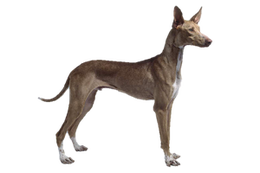 Since we lack a timeline, this article will explore the breeds geographically, starting with the Canary Islands and the Podenco Canario. Although found throughout the Islands, the Podenco Canario is most often found on Gran Canary and Tenerife. Whether or not these dogs were brought by the Phoenicians it is known they were established before their homeland was discovered by Spain in the 15th century. Originally they were kept by the native Guanche and while these natives were eventually absorbed by the Spanish settlers their dogs lived on. The Podenco Canario remains rare and is little seen elsewhere, even on the Spanish mainland. There are many mysteries in the world of dogs. From the entire species beginnings to the development of each breed. The origins of few dogs are known with exact certainty. Others can be pieced together by ancient writings or archaeological finds. And some are wrapped in the mists of legends. One of the more fascinating locations for dog history lies in the Mediterranean. Two of the oldest groupings developed there. However, no one knows where their ancestors came from. These dogs are the small bichons and the primitive Mediterranean sighthounds. Neither is related, but both trace their roots throughout the islands in the region. I have been updating the site and after researching both groups I thought I would compile my findings here. None of this information can be stated as fact, but it is the closest I have been able to come to a logical answer. Due to length I have split them into two posts, with today’s covering the bichons. The sighthounds will be covered next week. The bichon family includes seven modern breeds of dogs that are recognized, the Bichon Frisé, Bolognese, Coton de Tuléar, Havanese, Löwchen, Maltese, and Russian Tsvetnaya Bolonka. There is disagreement in some additions to this grouping, mainly the Löwchen and the Russian Tsvetnaya Bolonka. Some experts believe the Löwchen is not part of the bichon family and many others (including most kennel clubs) do not yet recognize the Russian Tsvetnaya Bolonka as a breed. Since several of these breeds are not well known, let’s introduce each of them before further diving into their history as a whole.
As we begin this winding journey, it is important to remember that until a few hundred years ago none of the bichons were a breed as we know today. Historically few dogs have been isolated enough to breed true without direct human intervention. Geographically, the Mediterranean has been a trade route for thousands of years. Ancient civilizations have risen and fallen in this region. While in later centuries European explorers would traverse the islands. Therefore, it is probable most, if not all, of the bichons interbred throughout their early beginnings. 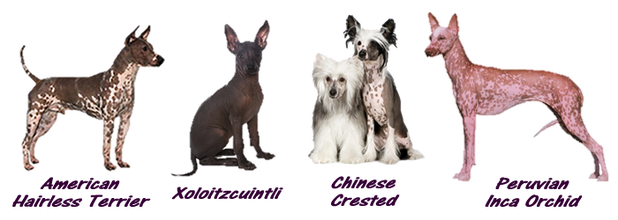 With the addition of the American Hairless Terrier to the American Kennel Club I thought it was time to tackle a topic I have wanted to post about for a while. The hairless breeds – and more specifically, where did they come from? Today there are four breeds that are recognized internationally by at least one major kennel club that are hairless, the aforementioned American Hairless Terrier (AKC, UKC), Chinese Crested Dog (AKC, FCI, KC, UKC), Peruvian Inca Orchid (FCI, UKC), and the Xoloitzcuintli (AKC, FCI, KC, UKC). The Peruvian Inca Orchid (also known as the Peruvian Hairless) and Xoloitzcuintli (or Mexican Hairless) are both ancient breeds, while the American Hairless Terrier was not created until the 1970s. As for the Chinese Crested, well, that is where most of the debate lies. Hairless dogs have existed in Central and South America since before written record, even today there are several breeds such as the Argentine Pila and Bolivian Khala that are unrecognized that still survive in more remote areas of the South American continent. As a group archeological evidence shows they have existed since at least pre-Colombian times and may date back for more than 3500 years. How they came to the area is debated, but in appearance they hold true to a more primitive type of dog, similar to the Carolina Dog of the United States and those traditionally kept by Native Americans that are now lost to us. For decades dog fanciers have insisted that the Chinese Crested and the American breeds have to be closely related due to their hairlessness. Many believe that the Chinese Crested is the older of the two, some even going so far as to assume that the Chinese brought hairless dogs on sea voyages to the new world long before Columbus himself stepped onto its soil. According to these beliefs the Chinese Crested descends from African hairless dogs (although others have held firm that again the Crested is the older of the two) spreading out from Africa to Asia long before written record. Despite the commonly accepted theory that Chinese Cresteds were transported by Chinese sailors around the world (supposedly their presence on ships was to help control the rat population) there is no mention of hairless dogs in China prior to the 16th century. As to the Chinese Crested being the basis for all hairless breeds there is no record of any hairless being imported from China. It seems far more likely that the primitive Xoloitzcuintli and its ancestors spread first throughout Central and South America, and after the discovery of the New World, onto Africa and from there Asia and Europe. There are records of hairless dogs being transported and traded throughout all the major trade routes during the 17th and 18th centuries. With this knowledge, it is quite possible the now extinct hairless “breeds”, such as the Abyssinian (also known as African) Sand Dog and Egyptian Hairless may very well have been nothing more than decedents of Xolo-type imports. This still leaves us asking where the Chinese Crested originated and what little evidence we have points to the United States. Early prototypes of these dogs appeared in the 1800s, but no stud books or records exist to point as to where they came from. It appears that they are the result of crosses of Xolo-types with terriers and Chihuahua-type dogs. True records were not kept until the 1950s when Debora Wood began doing so at her Crest Haven Kennel. Although where she obtained her base stock, is not recorded it is from Crest Haven that nearly every line of Chinese Crested can be traced back to. Still the Chinese legends persist, and it is doubtful they will ever be put to rest with nearly every kennel club and breed book continuing to state them as fact. If you would like more information on the hairless breeds I recommend picking up the book Hairless Dogs, the Naked Truth by Amy Fernandez and Kelly Rhae. On January 5th the American Kennel Club (AKC) announced two ‘new’ breeds to their ranks, but remember that although a breed is new to AKC recognition, it doesn’t mean that the breed itself is new at all.
Every state in the United States has their own state bird, but only 11 have honored dogs to represent them. As we celebrate our nation’s independence let’s take a quick look at how these breeds stand out.
|
AuthorLisa Quibell Archives
March 2019
Categories
All
|
- Home
- Worldly Dogs Blog
-
Breeds Geographically
- Africa >
-
Asia
>
- Australia >
-
Europe
>
- Austria >
- Belgium >
- Bosnia and Herzegovina >
- Croatia >
- Czech Republic >
- Denmark >
-
England
>
- Airedale Terrier
- Basset Hound
- Beagle
- Bedlington Terrier
- Border Collie
- Border Terrier
- Bull Terrier
- Bulldog
- Bullmastiff
- Cavalier King Charles Spaniel
- Clumber Spaniel
- Curly Coated Retriever
- English Cocker Spaniel
- English Foxhound
- English Setter
- English Springer Spaniel
- English Toy Spaniel
- Field Spaniel
- Flat Coated Retriever
- Greyhound
- Harrier
- Jack Russell Terrier
- Lakeland Terrier
- Lancashire Heeler
- Manchester Terrier
- Mastiff
- Miniature Bull Terrier
- Norfolk Terrier
- Norwich Terrier
- Old English Sheepdog
- Otterhound
- Parson Russell Terrier
- Patterdale Terrier
- Pointer
- Smooth Fox Terrier
- Sporting Lucas Terrier
- Staffordshire Bull Terrier
- Sussex Spaniel
- Whippet
- Wire Fox Terrier
- Yorkshire Terrier
- Finland >
-
France
>
- Anglo-Français de Petite Vénerie
- Ariégeois
- Barbet
- Basset Artésien Normand
- Basset Bleu de Gascogne
- Basset Fauve de Bretagne
- Beagle Harrier
- Beauceron
- Berger Picard
- Bichon Frisé
- Billy
- Blue Picardy Spaniel
- Braque d'Auvergne
- Braque de l'Ariége
- Braque Du Bourbonnais
- Braque Français
- Braque Saint-Germain
- Briard
- Briquet Griffon Vendéen
- Brittany
- Chien d'Artois
- Chien Français Blanc et Noir
- Chien Français Blanc et Orange
- Chien Français Tricolore
- Dogue de Bordeaux
- French Bulldog
- French Spaniel
- Grand Anglo-Français Blanc et Noir
- Grand Anglo-Français Blanc et Orange
- Grand Anglo-Français Tricolore
- Grand Basset Griffon Vendéen
- Grand Bleu de Gascogne
- Grand Gascon-Saintongeois
- Grand Griffon Vendéen
- Great Pyrenees
- Griffon Bleu de Gascogne
- Griffon Fauve de Bretagne
- Griffon Nivernais
- Löwchen
- Petit Basset Griffon Vendéen
- Petit Bleu de Gascogne
- Petit Gascon-Saintongeois
- Picardy Spaniel
- Poitevin
- Pont-Audemer Spaniel
- Porcelaine
- Pyrenean Shepherd
- Wirehaired Pointing Griffon
-
Germany
>
- Affenpinscher
- Bavarian Mountain Hound
- Biewer Terrier
- Boxer
- Dachshund
- Deutsche Bracke
- Deutscher Wachtelhund
- Doberman Pinscher
- Eurasier
- German Longhaired Pointer
- German Pinscher
- German Rough Haired Pointer
- German Shepherd Dog
- German Shorthaired Pointer
- German Spitz
- German Wirehaired Pointer
- Giant Schnauzer
- Great Dane
- Hanoverian Hound
- Hovawart
- Jagdterrier
- Kromfohrländer
- Large Münsterländer
- Leonberger
- Miniature Pinscher
- Miniature Schnauzer
- Pomeranian
- Poodle
- Pudelpointer
- Rottweiler
- Schnauzer
- Small Münsterländer
- Weimaraner
- Westphalian Dachsbracke
- White Shepherd Dog
- Greece >
- Hungary >
- Ireland >
- Italy >
- Malta >
- Netherlands >
- Norway >
- Poland >
- Portugal >
- Romania >
- Russia >
- Scotland >
- Serbia >
- Slovakia >
- Spain >
- Sweden >
- Switzerland >
- Turkey >
- Wales >
- Other European Breeds >
-
North America
>
- Canada >
- Mexico >
-
United States
>
- Alaskan Klee Kai
- Alaskan Malamute
- American Bulldog
- American Bully
- American Cocker Spaniel
- American Eskimo Dog
- American Foxhound
- American Hairless Terrier
- American Leopard Hound
- American Pit Bull Terrier
- American Staffordshire Terrier
- American Water Spaniel
- Australian Shepherd
- Black and Tan Coonhound
- Black Mouth Cur
- Bluetick Coonhound
- Boston Terrier
- Boykin Spaniel
- Carolina Dog
- Catahoula Leopard Dog
- Chesapeake Bay Retriever
- Chinook
- English Coonhound
- English Shepherd
- Miniature American Shepherd
- Mountain Cur
- Olde English Bulldogge
- Plott Hound
- Rat Terrier
- Redbone Coonhound
- Silken Windhound
- Stephens' Cur
- Teddy Roosevelt Terrier
- Toy Fox Terrier
- Treeing Cur
- Treeing Feist
- Treeing Tennessee Brindle
- Treeing Walker Coonhound
- Other North American Breeds >
- South America >
- Alphabetical List
- Breeds By Type
-
Extinct
- African Sand Dog
- Bichon Tenerife
- Basset d'Artois
- Basset Normand
- Basset Saintongeois
- Black and Tan Terrier
- Blanquito de la Habana
- Bouvier des Moerman
- Bouvier des Paret
- Bouvier des Roulers
- Bullenbeisser
- Celtic Hound
- Céris
- Chien Blanc du Roi
- Coton de Reunion
- English Red Decoy Dog
- Grand Fauve de Bretagne
- Griffon d’Ecurie
- Hall's Heeler
- Han Dog
- Happa Dog
- Larye
- Leauvenaar
- Molossus
- Montembeouf
- Normand Hound
- Paisley Terrier
- Saint Hubert Hound
- Saintongeois Hound
- Tahltan Bear Dog
- Tesem
- Timmon's Biter
-
Kennel Clubs
- About Worldly Dogs
Worldly Dogs 2017
- Home
- Worldly Dogs Blog
-
Breeds Geographically
- Africa >
-
Asia
>
- Australia >
-
Europe
>
- Austria >
- Belgium >
- Bosnia and Herzegovina >
- Croatia >
- Czech Republic >
- Denmark >
-
England
>
- Airedale Terrier
- Basset Hound
- Beagle
- Bedlington Terrier
- Border Collie
- Border Terrier
- Bull Terrier
- Bulldog
- Bullmastiff
- Cavalier King Charles Spaniel
- Clumber Spaniel
- Curly Coated Retriever
- English Cocker Spaniel
- English Foxhound
- English Setter
- English Springer Spaniel
- English Toy Spaniel
- Field Spaniel
- Flat Coated Retriever
- Greyhound
- Harrier
- Jack Russell Terrier
- Lakeland Terrier
- Lancashire Heeler
- Manchester Terrier
- Mastiff
- Miniature Bull Terrier
- Norfolk Terrier
- Norwich Terrier
- Old English Sheepdog
- Otterhound
- Parson Russell Terrier
- Patterdale Terrier
- Pointer
- Smooth Fox Terrier
- Sporting Lucas Terrier
- Staffordshire Bull Terrier
- Sussex Spaniel
- Whippet
- Wire Fox Terrier
- Yorkshire Terrier
- Finland >
-
France
>
- Anglo-Français de Petite Vénerie
- Ariégeois
- Barbet
- Basset Artésien Normand
- Basset Bleu de Gascogne
- Basset Fauve de Bretagne
- Beagle Harrier
- Beauceron
- Berger Picard
- Bichon Frisé
- Billy
- Blue Picardy Spaniel
- Braque d'Auvergne
- Braque de l'Ariége
- Braque Du Bourbonnais
- Braque Français
- Braque Saint-Germain
- Briard
- Briquet Griffon Vendéen
- Brittany
- Chien d'Artois
- Chien Français Blanc et Noir
- Chien Français Blanc et Orange
- Chien Français Tricolore
- Dogue de Bordeaux
- French Bulldog
- French Spaniel
- Grand Anglo-Français Blanc et Noir
- Grand Anglo-Français Blanc et Orange
- Grand Anglo-Français Tricolore
- Grand Basset Griffon Vendéen
- Grand Bleu de Gascogne
- Grand Gascon-Saintongeois
- Grand Griffon Vendéen
- Great Pyrenees
- Griffon Bleu de Gascogne
- Griffon Fauve de Bretagne
- Griffon Nivernais
- Löwchen
- Petit Basset Griffon Vendéen
- Petit Bleu de Gascogne
- Petit Gascon-Saintongeois
- Picardy Spaniel
- Poitevin
- Pont-Audemer Spaniel
- Porcelaine
- Pyrenean Shepherd
- Wirehaired Pointing Griffon
-
Germany
>
- Affenpinscher
- Bavarian Mountain Hound
- Biewer Terrier
- Boxer
- Dachshund
- Deutsche Bracke
- Deutscher Wachtelhund
- Doberman Pinscher
- Eurasier
- German Longhaired Pointer
- German Pinscher
- German Rough Haired Pointer
- German Shepherd Dog
- German Shorthaired Pointer
- German Spitz
- German Wirehaired Pointer
- Giant Schnauzer
- Great Dane
- Hanoverian Hound
- Hovawart
- Jagdterrier
- Kromfohrländer
- Large Münsterländer
- Leonberger
- Miniature Pinscher
- Miniature Schnauzer
- Pomeranian
- Poodle
- Pudelpointer
- Rottweiler
- Schnauzer
- Small Münsterländer
- Weimaraner
- Westphalian Dachsbracke
- White Shepherd Dog
- Greece >
- Hungary >
- Ireland >
- Italy >
- Malta >
- Netherlands >
- Norway >
- Poland >
- Portugal >
- Romania >
- Russia >
- Scotland >
- Serbia >
- Slovakia >
- Spain >
- Sweden >
- Switzerland >
- Turkey >
- Wales >
- Other European Breeds >
-
North America
>
- Canada >
- Mexico >
-
United States
>
- Alaskan Klee Kai
- Alaskan Malamute
- American Bulldog
- American Bully
- American Cocker Spaniel
- American Eskimo Dog
- American Foxhound
- American Hairless Terrier
- American Leopard Hound
- American Pit Bull Terrier
- American Staffordshire Terrier
- American Water Spaniel
- Australian Shepherd
- Black and Tan Coonhound
- Black Mouth Cur
- Bluetick Coonhound
- Boston Terrier
- Boykin Spaniel
- Carolina Dog
- Catahoula Leopard Dog
- Chesapeake Bay Retriever
- Chinook
- English Coonhound
- English Shepherd
- Miniature American Shepherd
- Mountain Cur
- Olde English Bulldogge
- Plott Hound
- Rat Terrier
- Redbone Coonhound
- Silken Windhound
- Stephens' Cur
- Teddy Roosevelt Terrier
- Toy Fox Terrier
- Treeing Cur
- Treeing Feist
- Treeing Tennessee Brindle
- Treeing Walker Coonhound
- Other North American Breeds >
- South America >
- Alphabetical List
- Breeds By Type
-
Extinct
- African Sand Dog
- Bichon Tenerife
- Basset d'Artois
- Basset Normand
- Basset Saintongeois
- Black and Tan Terrier
- Blanquito de la Habana
- Bouvier des Moerman
- Bouvier des Paret
- Bouvier des Roulers
- Bullenbeisser
- Celtic Hound
- Céris
- Chien Blanc du Roi
- Coton de Reunion
- English Red Decoy Dog
- Grand Fauve de Bretagne
- Griffon d’Ecurie
- Hall's Heeler
- Han Dog
- Happa Dog
- Larye
- Leauvenaar
- Molossus
- Montembeouf
- Normand Hound
- Paisley Terrier
- Saint Hubert Hound
- Saintongeois Hound
- Tahltan Bear Dog
- Tesem
- Timmon's Biter
-
Kennel Clubs
- About Worldly Dogs

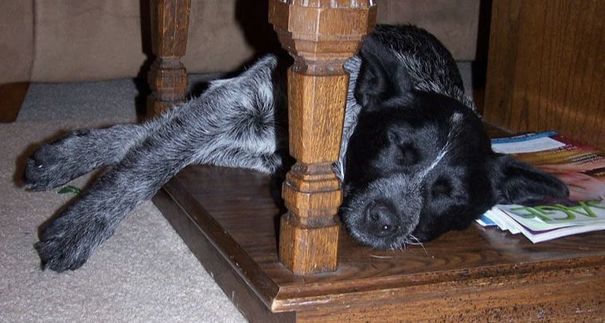
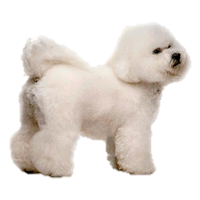
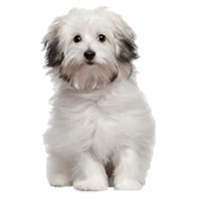
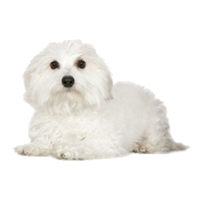

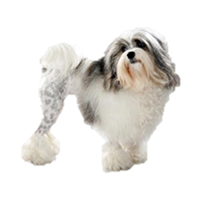
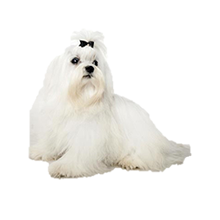
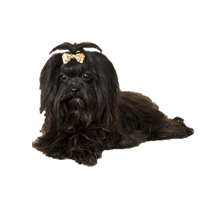
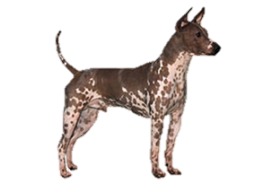

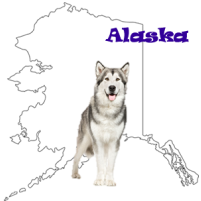
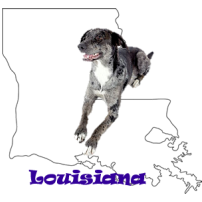
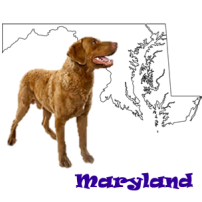
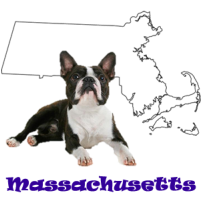
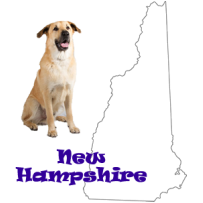
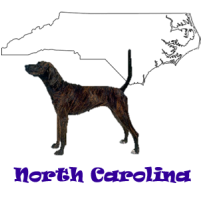
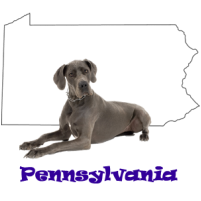
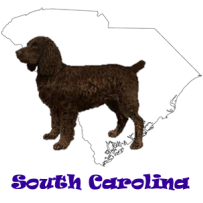
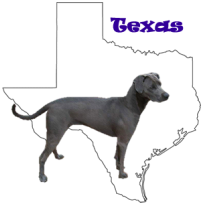
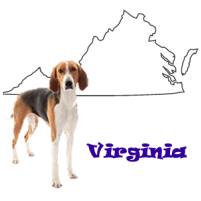

 RSS Feed
RSS Feed